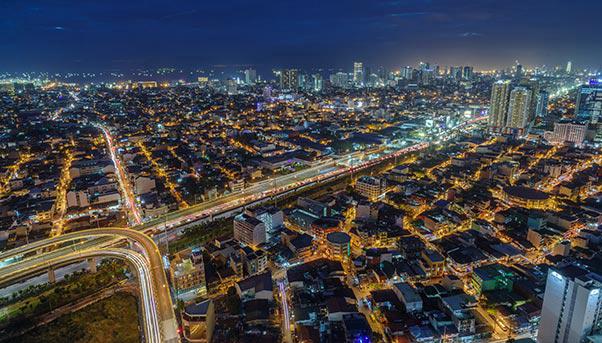
The Philippines is hungry for energy. Once derided as the latest “sick man of Asia” in the 1980s when inflation ran at more than 14% and gross domestic product (GDP) grew no more than 2%, it has become the most dynamic country in Southeast Asia, surpassing the likes of Malaysia, Indonesia and Thailand.
This renewed economic vigour – underlined by International Monetary Fund (IMF) estimates that have the GDP growing at an average annual rate of more than 6% until 2020 – has obviously led to a surge in demand for energy.
Even though the country’s energy market is one of the most open in the region, its development has not kept up with this surge. Between 2001 and 2014, energy consumption rose 64.2% from 47,049 GWh to 77,261 GWh. Installed production capacity, meanwhile, increased by 34.1% from 13,380 MW to 17,944 MW, according to the country’s Department of Energy.
Oxford Business Group, a consultancy specialized in emerging markets, sees a wide gap to be breached as energy demand grows by 4% a year. The International Renewable Energy Agency (IRENA) in a 2015 report said four million residents – about 4% of the total population – did not have access to electricity. Meanwhile, 70% of the total population has electricity for only eight hours a day.
Energy Policy
The Philippine government is taking measures to address the problem and breach the gap.
In 2012, the Department of Energy announced its Philippine Energy Plan (PEP), comprising a series of investments to be made until 2030. The investments vary according to the requirements of the communities concerned, especially those in rural areas where its inhabitants are gradually coming out of poverty.
The challenge is great, given how the Philippines is an archipelago of 7,107 islands, some 2,000 of which are populated. With the PEP obliging it to guarantee the supply of electricity even to the smallest of islands, the government is resorting to projects like the construction of small hydropower plants.
In 2014 alone, it oversaw the construction of eight hydropower plants, most of them located in the Manila area. In December 2016, it held a ground-breaking ceremony for the Pulanai Plant in Valencia City where the $54.2 million project will eventually produce 10.6 MW.
Hydro power is the leading source of clean energy in the Philippines and the second biggest supplier of electricity, responsible for 19.7% of the total.
Its prominence is due to the fact that it has had a long presence in the country, dating back to 1913 when Christian missionaries set up Camp John Hay Hydroelectric Power Plant in Baguio City with an installed capacity of 560 KW.
Its role was recognized in 2011 by the National Renewable Energy Program (NREP), launched by the government to increase the use of renewable energy in the next 20 years.
The goal is to increase by 300% the installed production capacity of renewable sources of energy from 5,438 MW to 15,304 MW. Hydro is obviously making up the bulk of this increase, forecast to produce up to 5,394 MW. Wind is to be second in line with an additional 2,345 MW, then geothermal at 1,495 MW, solar at an additional 350 MW, biomass with an additional 277 MW and an ocean facility, a first for the Philippines, at 71 MW.
As a result, the Philippines could become the biggest user of geothermal energy in the world and a leader in wind energy in Southeast Asia.

